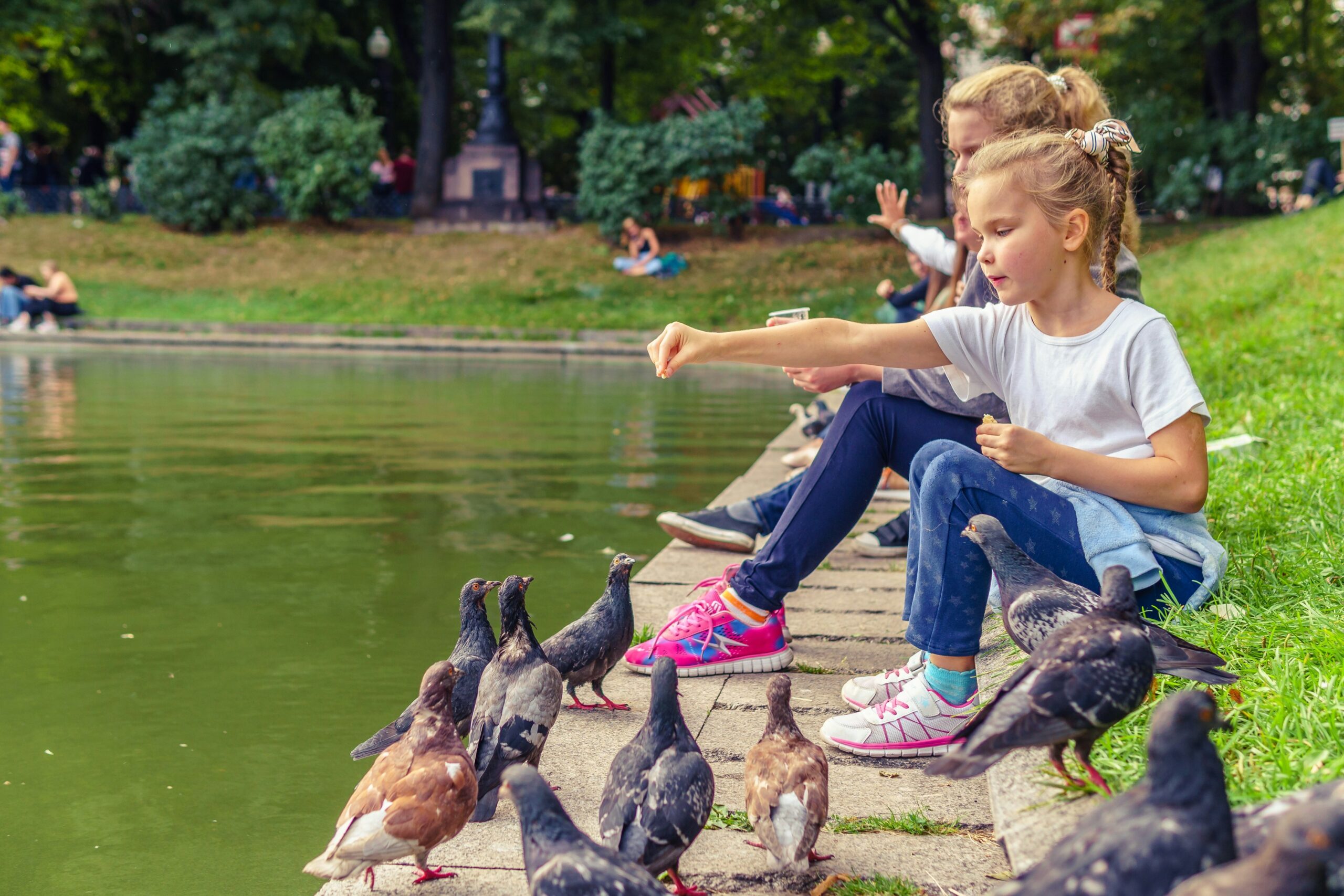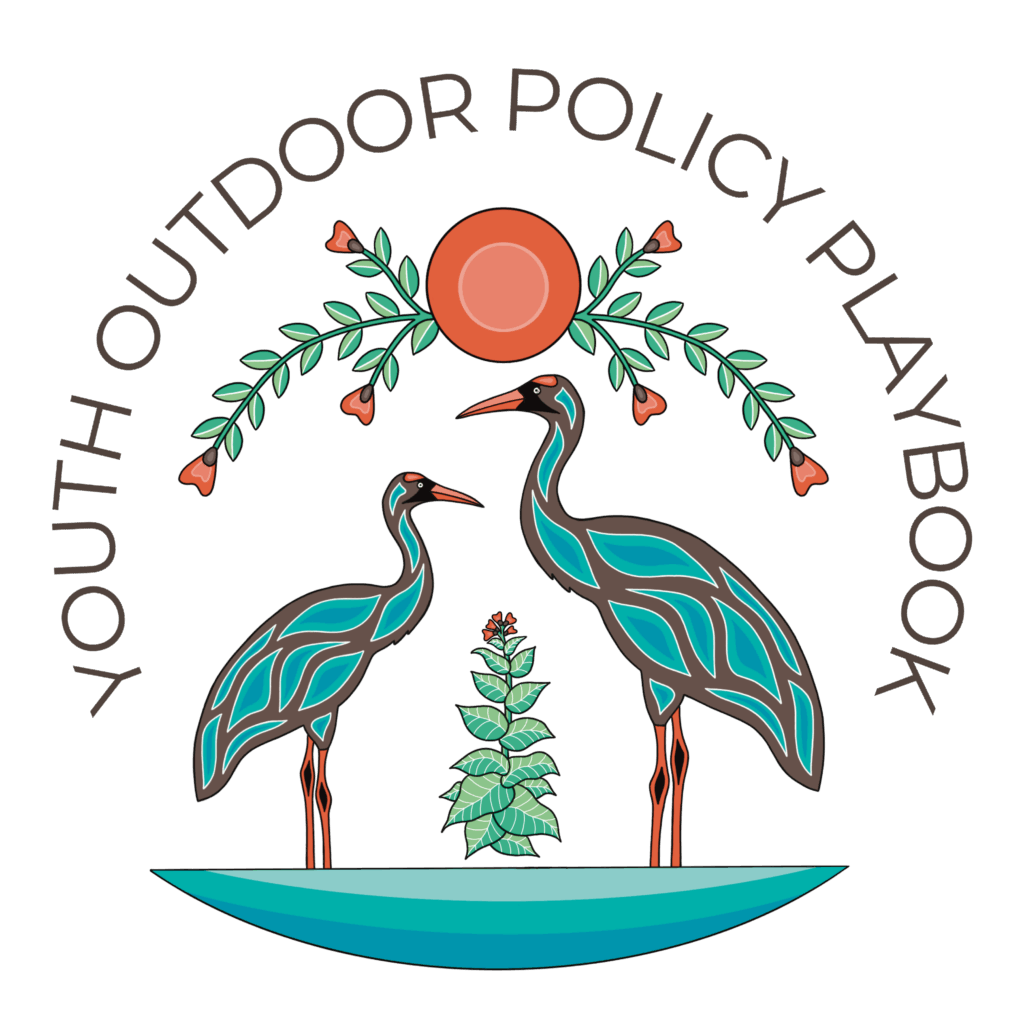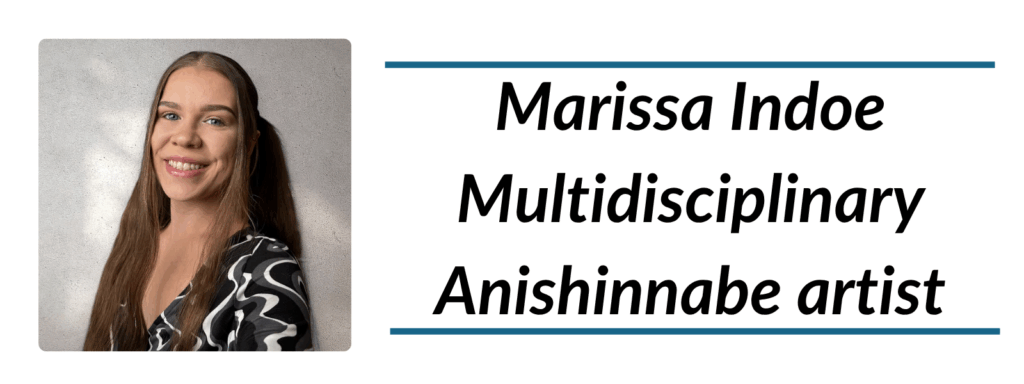
Blogs
Introducing the New Logo of the Youth Outdoor Policy Playbook: A Symbol of Connection, Culture, and Stewardship
October 7, 2025
Introducing the New Logo of the Youth Outdoor Policy Playbook
The Youth Outdoor Policy Playbook (YOPP) has a new logo that reflects its mission through rich cultural symbolism and intentional design. The Youth Outdoor Policy Playbook is a collaborative initiative between NCEL, the Nuestra Tierra Conservation Project, the North American Association for Environmental Education, and the Children & Nature Network that empowers youth, communities, and state lawmakers to reconnect all young people to the outdoors through equitable and impactful policy solutions.
Created by Anishinaabe artist Marissa Indoe of the Chapleau Ojibwe First Nation, the logo weaves together themes of leadership, collaboration, and harmony with the natural world. Indoe, who specializes in painting, digital art, and beadwork, draws from her Ojibwe heritage and connection to nature in all of her work.
In her own words, Indoe explains:
“The cranes and the semma plant show leadership, lawmakers, connection, and respect. The young crane and adult crane are turning toward one another to work together. Looking over both is grandfather sun, who holds teachings about respecting the land that remind us to spend meaningful time outside. The florals coming off the sun have semma blooms as well. The water the cranes are standing in represents how everything works in harmony together, and how we need to work in harmony to protect the land.”


This powerful visual story reflects the Playbook’s mission to support leaders and communities in advancing policies that connect all youth to the outdoors. Though state- and locally-focused, its ideas often inspire action at the federal level and beyond.
The logo’s themes of intergenerational collaboration and cultural respect mirror the Playbook’s spirit: bringing together diverse voices to build a more inclusive and sustainable future.
Marissa Indoe resides in Sault Ste. Marie, Ontario, where she continues to explore the intersection of traditional Anishinaabe art and modern expression. Her work honors the past while looking ahead — much like the Playbook and the communities it serves.